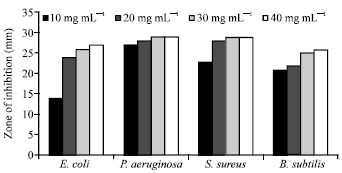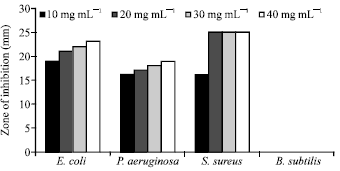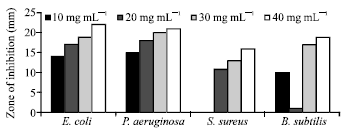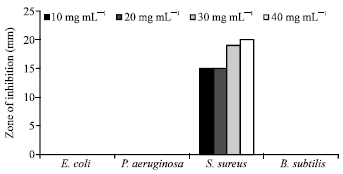Research Article
In vitro Evaluation of Antibacterial Activities of Crude Extracts of Withania somnifera (Ashwagandha) to Bacterial Pathogens
Centre for Biotechnology, University of Allahabad, Allahabad-211002, India
Priyanka Dwivedi
Centre for Biotechnology, University of Allahabad, Allahabad-211002, India
Shalini Purwar
Centre for Biotechnology, University of Allahabad, Allahabad-211002, India













